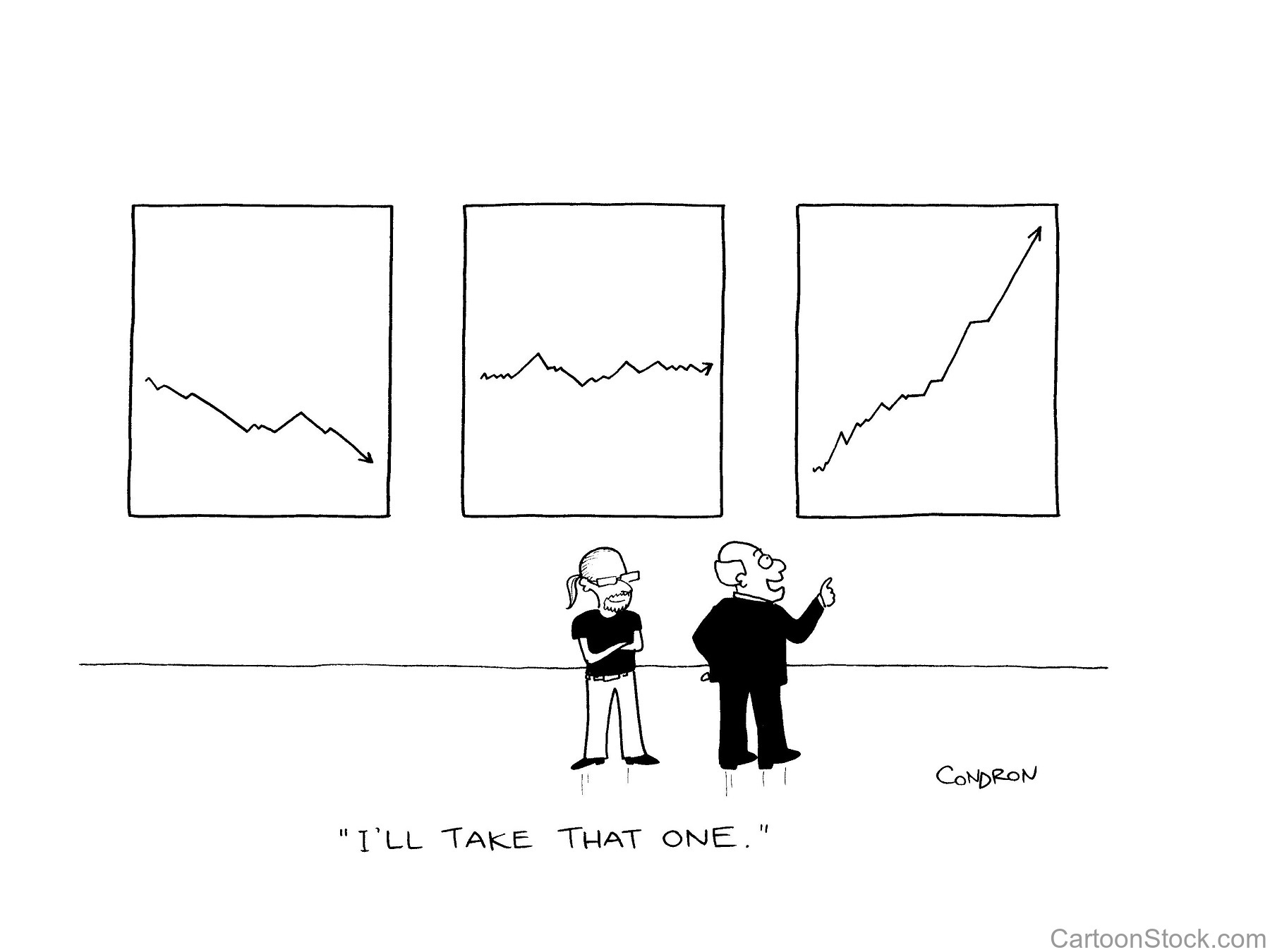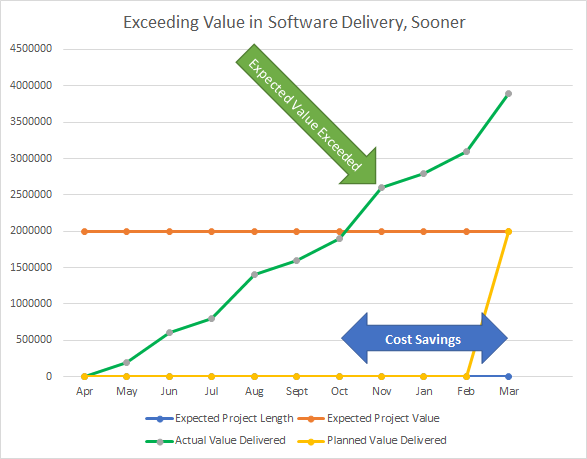
In the world of product innovation, an agile framework provides much greater value than traditional development methodologies can offer. Jeff introduced this concept in Agile Provides the Greatest Value to Organizations. In this article, we’ll explain one of greatest rewards we can earn using agile: exceeding expected value.
Take for example a traditional team that executes a project with a duration of one year – the expected project length. In a typical waterfall method, we realize all of the expected project value – or in other words, the planned value delivered – at the end of the project. Referring to the figure below, see the yellow line as it approaches the end of the project.

If on the other hand, we use a seasoned Scrum team, we will meet the expected project value (orange line) far earlier than forecasted by the original project length, as demonstrated with the green actual value delivered.
How does this work?
- We plan the work in smaller, independant, testable, deliverable units.
- We assign value, with a testing method, to each unit.
- We use the same fixed period of time, every time we do the work.
- We release the units into production and run our tests for value.
- We use the test results as a feedback loop to filter the most valuable remaining work to the top, based on actual results.
- Repeat, 1 – 5, with the new priorities based on value vs cost.
→ New work can be added if deemed most valuable, every sprint.
→ Planned work could be pushed off or even removed if it no longer makes sense to do.
Two significant features worth pointing out
Note that the Scrum team is delivering incrementally, month after month, until we not only reach expected project value, but exceed it, and even earlier than the original expected project length.
Two great surprises occur because of this:
- The cost to meet the expected project value will be significantly lower than the budgeted amount, improving the ROI and freeing up funds for capital redeployment.
- Because the team has learned to deliver value incrementally, this trend will continue, eventually far exceeding the original expected project value.
For further reading please see the following case studies:
- Intel uses Scrum to accomplish 66% reduction in Cycle Time, pg 12 of Agile Project Development at Intel: A Scrum Odyssey
- NetHealth responds quicker to market, pg 3 of How Net Health Scales Scrum
- Many more examples including Zurich Insurance, ING, Netflix (38 in all) in the Scrum Case Studies
- What is the Return on Investment (ROI) of Agile Methods?
As I indicated earlier, Scrum exceeds expected value for the organization – and with greater product innovation than traditional project methods can offer – due to frequent feedback in fixed iterations (sprints). As the second of the twelve Principles behind the Agile Manifesto establishes…
“Welcome changing requirements, even late in development. Agile processes harness change for the customer’s competitive advantage.”
A great resource for people in business and/or process oriented problem solving organizations.
Thank you Sam. Scrum is a great resource, especially for competitive innovation.